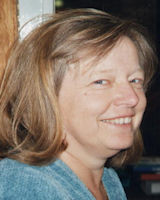 By Maureen Storey
By Maureen Storey
In this journal we welcome new member Barbara Solesmith. Barbara is researching the family of Herbert William Robert Sole, who married Florence Edith Bissell in Southsea, HAM, on 5 August 1894. Our records take this family back to Richard Sole and his second wife Mary Master, who married in East Preston, Sussex, in 1594.
Hannah Sole is researching the family of her great grandparents Frederick George Sole and Elizabeth McEvoy, who married in Mountmellick, Ireland, on 26 February 1900. She has had some success tracking down Frederick’s forebears but wondered if we had any information on the McEvoys. Our database shows that Elizabeth’s father’s name was Edward but we have no further details. Frederick met Elizabeth while working in Ireland and her family only agreed to marriage on the condition that the couple lived in Ireland. Their first four children were born in County Waterford, but then Frederick became ill and the family were forced to move to England, settling in Churchill, Oxford, where Frederick had been born. Frederick’s ancestry has been traced back to William Soul and Mary Sansom, who married in Cirencester in 1749 and who are currently at the head of our largest Gloucestershire tree.
Matthew Moat has found a new branch of his tree in the USA and has been exchanging information with Patty Sole. He has found graves for several members of his family on the website findagrave and this has enabled him to fill in missing birth and death dates. Matthew’s family has been traced back as far as John Sole and Elizabeth Cook, who married in Nackington, Kent in 1750.
Geoff Knott and Lizzie Love have been researching the family of Philip Soal and Ann Savaker, who married at St James, Westminster, on 12 October 1828. Their aim was to trace all of the couple’s descendants, and so they followed the female lines down as well as the male ones. The resulting tree contains details on more than 200 people.
Geoff has been pursuing a similar aim for his own family. He is a member of our largest Sussex family (with almost 1700 individuals in our database), which starts with marriage of James Soale and Mary Lassiter in Ashurst, Sussex, 5 May 1640, so this will be a massive task.
The fact that a large number of the records of World War I soldiers were destroyed in World War II means that there are large gaps in our knowledge of the part that our families played in The Great War. The army records that have survived have been incorporated into our database and thanks to the work of the Commonwealth War Graves Commission website we have identified all the service personnel who died as a result of the war. What the WWI medal roll shows, however, is that there are a large number of men who served in the forces but aren’t covered by either of these sources. Ideally, we would like the database to include a record of everyone who served in the armed forces in WWI, even if it was only the bare fact that they were in a particular regiment or on a particular ship. The only personal information given on the medal roll is the recipient’s surname and initials (the actual record cards sometimes give the address to which the medals were sent, but this doesn’t always help), hence it often isn’t possible to identify an individual from the roll. So, if you know anything about the wartime service of a member of your family, could you please let me know.
In the meantime, trawling through the new record sources that have recently been added to the major genealogical websites has yielded some ‘new’ soldiers for our database. For example, the records for the Honourable Artillery Company (HAC), a territorial regiment whose members are largely drawn from those who live or work in the City of London, for 1848 to 1922 are now on findmypast and from these we learn that Albert Seymour Soole, who joined the HAC as a private in 1915 went with the regiment to France. In 1917 he was commissioned as a second lieutenant and was transferred to the Machine Gun Corps.
Another source that has proved fruitful for snippets of information about service personnel is the newspapers. For example, in the Hull Daily Mail of 2 Oct 1917 is a report of the death of Solomon Sole in a prisoner of war camp (plus the added bonus that it includes a photo of Solomon). While Solomon’s service record has survived and he appears in the Commonwealth War Graves database, the article also mentions that three of Solomon’s brother’s were in the forces. We already knew from the army records that his brother Albert served with the Northumberland Fusiliers, but we didn’t know that brother Ernest was in the RAMC and brother Sidney was in the RFA.

 By Maureen Storey
By Maureen Storey